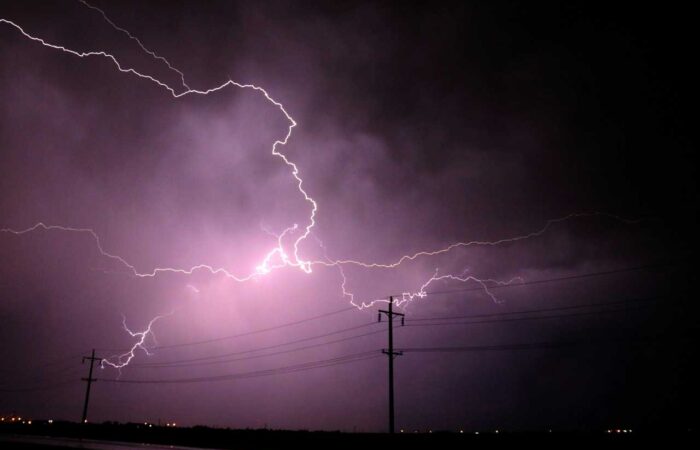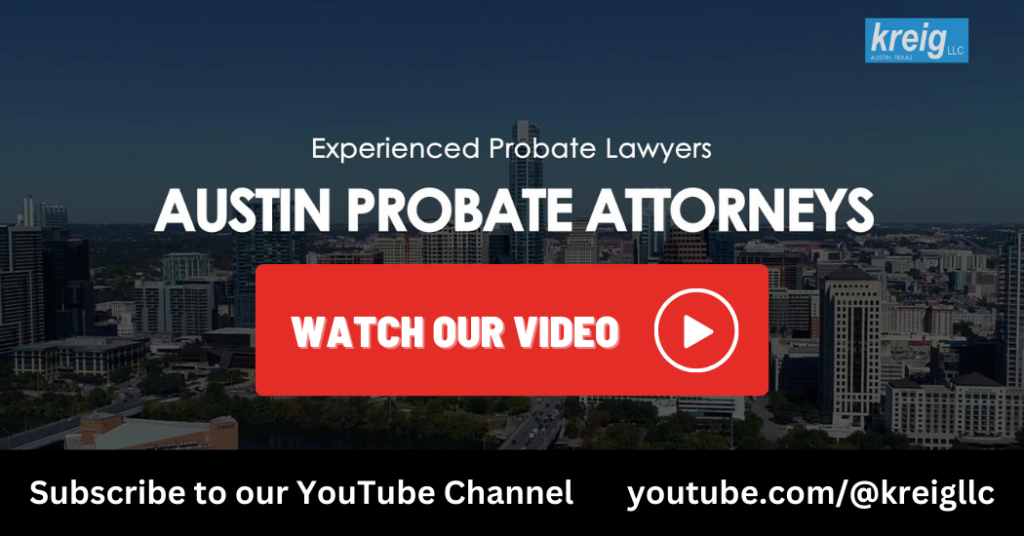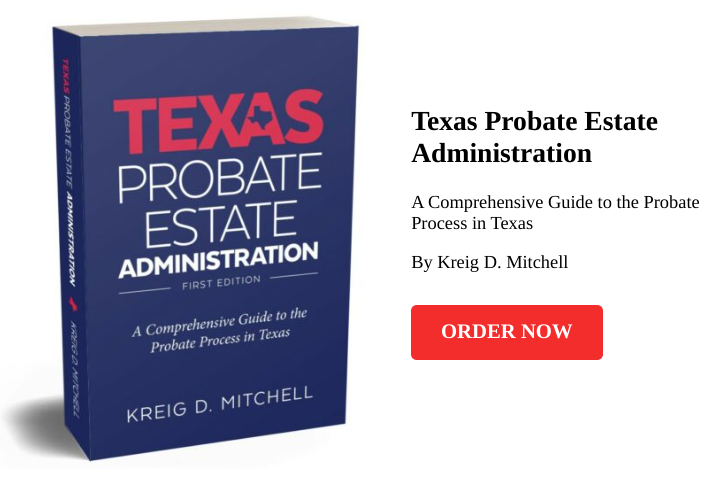Holographic wills appeal to people who want simple estate planning without attorneys. This may include online forms or services that generate wills, or even having a non-attorney friend prepare the document. These non-attorney wills are frequently disputed, and often result in expensive litigation.
One area of the disputes for these wills are those who handwrite their wishes on paper. They sign the document. Under Texas law, no witnesses are required. The informality makes holographic wills attractive. However, this simplicity creates questions about what makes a holographic will valid.
Texas law requires holographic wills to be “wholly in the handwriting of the testator.” This language appears straightforward. However, disputes arise when documents contain writing by multiple people. A husband and wife might jointly create a document disposing of their property. A notary might add an acknowledgment. Witnesses might sign their names. The question becomes whether these additional writings invalidate an otherwise valid holographic will.
In re Estate of Capps, 154 S.W.3d 242 (Tex. App.—Texarkana 2005, no pet.), provides an opportunity to examine when documents containing writing by people other than the testator can qualify as valid holographic wills.
Facts & Procedural History
Nadine executed a handwritten will on July 10, 1996. The two-page document stated that the house and land would go to her church and to Devon and Sue. The house’s contents were given first choice to Devon and Sue, especially medical books, with the rest going to the poor and needy. The document gave jewelry and colonial lamps to a different person. A certificate of deposit would go to the person named on the certificate as joint partner.
The document was handwritten. However, it purported to devise property of two people: Ola Maye Capps and Nadine Capps. The handwriting was consistent with Nadine’s signature. Both Nadine and Ola Maye signed the document. The document also contained an acknowledgment of a notary public with the notary’s signature.
Several weeks after the will was prepared and signed, Nadine gave Sue Roberts a copy of the document purporting to be her will. At Nadine’s direction, Sue made a photocopy and placed it in the church’s records. Also at Nadine’s direction, Sue locked a copy in a file cabinet where it stayed until Nadine’s death.
Nadine died. The original will could not be found despite a thorough search. Devon Roberts filed an application to probate a photocopy of the will. Truman Bishop and Hulene Parvar contested the application.
Bishop and Parvar raised multiple challenges to the will. Among other arguments, they asserted the evidence was insufficient to show the will was wholly in Nadine’s hand. They pointed to Ola Maye’s signature on the document. They pointed to the notary’s acknowledgment and signature. They argued these writings by people other than Nadine invalidated the document as a holographic will.
The county court found the will was valid and admitted it to probate as a holographic will. The court appointed Devon Roberts as administrator of the estate. Bishop and Parvar appealed.
The Wholly-in-Handwriting Requirement for Holographic Wills
To show a valid holographic will, the proponent has the burden of proving that the instrument is wholly in the testator’s handwriting. The Court of Appeals cited Trim v. Daniels, 862 S.W.2d 8, 10 (Tex. App.—Houston [1st Dist.] 1992, writ denied), for this principle. This requirement distinguishes holographic wills from attested wills.
Attested wills must be signed by the testator and witnessed by at least two credible witnesses. The witnesses sign their names on the will. Their signatures obviously are not in the testator’s handwriting. However, attested wills do not require all writing to be in the testator’s hand. The testator may type the will or have someone else type it. The testator may have an attorney draft it. Only the testator’s signature must be in the testator’s handwriting (or the testator must acknowledge a signature made by another person at the testator’s direction).
Holographic wills operate differently. They do not require witnesses. The lack of witnesses creates greater risk of fraud. Someone could forge a handwritten document and claim it represents the testator’s wishes. The wholly-in-handwriting requirement provides protection against fraud. If the entire substantive portion of the will is in the testator’s handwriting, courts can compare that handwriting to known samples of the testator’s writing to verify authenticity.
If not self-proved, a will wholly in the handwriting of the testator may be proved by two witnesses to the handwriting. This evidence may be by sworn testimony or affidavit taken in open court. The Court cited Lopez v. Hansen, 947 S.W.2d 587, 589 (Tex. App.—Houston [1st Dist.] 1997, no pet.), for this requirement. These witnesses need not have witnessed the will’s execution. They need only be familiar with the testator’s handwriting and able to identify it.
The Surplusage Exception to the Wholly-in-Handwriting Rule
Texas courts have long recognized an exception to the strict wholly-in-handwriting requirement. A testamentary instrument intended by the testator as holographic will be enforced as such although it contains words not in the handwriting of the testator if such other words are not necessary to complete the instrument and do not affect its meaning.
The Court of Appeals cited Maul v. Williams, 69 S.W.2d 1107, 1109-10 (Tex. Comm’n App. 1934, holding approved), for this principle. The Court also cited Watkins v. Boykin, 536 S.W.2d 400 (Tex. Civ. App.—El Paso 1976, writ ref’d n.r.e.), and Kramer v. Crout, 279 S.W.2d 932 (Tex. Civ. App.—Waco 1955, writ ref’d n.r.e.), as additional authority.
This exception protects holographic wills from technical invalidity based on immaterial writings by others. Consider a testator who handwrites a complete will disposing of all property. The testator takes the document to a notary and has it notarized. The notary adds a standard acknowledgment and signs it. Under a strict reading of the wholly-in-handwriting rule, the notary’s writing would invalidate the will. However, the notary’s acknowledgment adds nothing to the testamentary provisions. It does not affect the meaning of what the testator wrote. Courts treat such additions as surplusage that does not invalidate the holographic will.
The same principle applies to witness signatures. If a testator creates a holographic will and then asks people to sign as witnesses, those witness signatures do not invalidate the holographic will. The witnesses’ signatures are surplusage. They are not necessary to complete the instrument. They do not affect its meaning.
The key question becomes whether the writing by someone other than the testator is necessary to complete the instrument or affects its meaning. If the answer is no, the writing is surplusage. The document can still qualify as a valid holographic will.
Application to Nadine’s Will
The document at issue contained writing by three people: Nadine Capps, Ola Maye Capps, and the notary public. The Court of Appeals examined which portions of the document were in Nadine’s handwriting versus in someone else’s handwriting.
For purposes of analyzing whether the will was wholly in Nadine’s handwriting, the document’s material which was in other than Nadine’s handwriting consisted of Ola Maye’s signature, the acknowledgment, and the notary public’s signature. The court concluded those were surplusage to a valid holograph.
The dispositive portions of the document—the parts that actually disposed of Nadine’s property—were entirely in Nadine’s handwriting. She wrote out which property went to whom. She specified that the house and land went to her church and to Devon and Sue Roberts. She wrote that the house’s contents went first choice to Devon and Sue. She wrote that her jewelry and colonial lamps went to another person. She wrote that her certificate of deposit went to the person named on it as joint partner.
These dispositive provisions were complete without Ola Maye’s signature. They were complete without the notary’s acknowledgment and signature. Ola Maye’s signature added nothing to Nadine’s testamentary intent regarding disposition of Nadine’s property. The notary’s acknowledgment and signature merely confirmed that Nadine and Ola Maye appeared before the notary. This confirmation was unnecessary to complete the will and did not affect its meaning.
A number of witnesses examined the photocopy of the will in evidence. They testified as to their familiarity with Nadine’s handwriting. They identified the handwriting of the will as hers. Their testimony in sum was that all the dispositive portions of the document were written in Nadine’s hand and it was signed by her.
This testimony was sufficient to support probate as a holographic will. There was no evidence to the contrary.
When Additional Writing Would Invalidate a Holographic Will
The surplusage exception has limits. Not all writing by others can be disregarded. If the writing by someone other than the testator is necessary to complete the instrument or affects its meaning, the document fails as a holographic will.
Consider a document where the testator writes “I leave my house to” and another person fills in the beneficiary’s name. The beneficiary’s name is necessary to complete the devise. Without it, the document does not identify who receives the house. Because the beneficiary designation is in someone else’s handwriting and is necessary to complete the instrument, the document fails as a holographic will.
Similarly, if a testator writes “I leave my entire estate to my children” and another person adds “in equal shares,” that addition affects the meaning. Without the “in equal shares” language, the devise might be interpreted differently. The addition by another person changes how the property passes. Such a document would fail as a holographic will.
The distinction turns on whether the testator created a complete testamentary instrument in his or her own handwriting. If so, additions by others do not invalidate the will so long as those additions are unnecessary surplusage. If not—if the additions by others are required to understand the testator’s intent—the document fails for lack of being wholly in the testator’s handwriting.
Practical Implications for Holographic Wills
In re Estate of Capps provides guidance for people creating holographic wills and for attorneys advising clients about them. The case confirms that holographic wills can contain some writing by people other than the testator without becoming invalid.
Testators need not worry that having a holographic will notarized will invalidate it. The notary’s acknowledgment and signature are surplusage. Similarly, testators need not worry that having witnesses sign a holographic will will invalidate it. Witness signatures are surplusage.
However, testators must ensure all dispositive provisions are in their own handwriting. They must write out who receives what property. They must not leave blanks for others to fill in. They must not rely on additions by others to complete their testamentary intent.
Joint wills—documents disposing of property of multiple people—create additional complications. In this case, the document purported to dispose of both Nadine’s and Ola Maye’s property. However, the court analyzed only whether the document was valid as Nadine’s will. The fact that Ola Maye signed the document did not invalidate it as Nadine’s holographic will because all the dispositive provisions regarding Nadine’s property were in Nadine’s handwriting.
Attorneys advising clients about holographic wills should explain these requirements clearly. While holographic wills offer simplicity, they must be wholly in the testator’s handwriting as to all dispositive provisions. Any writing by others must be clearly unnecessary surplusage rather than material to understanding the testator’s intent.
The Takeaway
This case establishes that holographic wills can contain some writing by people other than the testator without becoming invalid. Signatures by other individuals, notary acknowledgments, and witness signatures constitute surplusage that does not invalidate an otherwise valid holographic will so long as all dispositive provisions—the portions of the document that actually dispose of property—are wholly in the testator’s handwriting. The surplusage exception protects holographic wills from technical invalidity based on immaterial additions by others. However, if writing by someone other than the testator is necessary to complete the instrument or affects its meaning, the document fails as a holographic will.
Do you need help with a probate matter in Austin or the surrounding area? We are Austin probate attorneys. We help clients navigate the probate process. Call today for a free confidential consultation, 512-273-7444.
Our Austin Probate Attorneys provide a full range of probate services to our clients, including helping with probate administrations for holographic wills and probate disputes involving handwritten wills. Affordable rates, fixed fees, and payment plans are available. We provide step-by-step instructions, guidance, checklists, and more for completing the probate process. We have years of combined experience we can use to support and guide you with probate and estate matters. Call us today for a FREE attorney consultation.
Disclaimer
The content of this website is for informational purposes only and should not be construed as legal advice. The information presented may not apply to your situation and should not be acted upon without consulting a qualified probate attorney. We encourage you to seek the advice of a competent attorney with any legal questions you may have.




